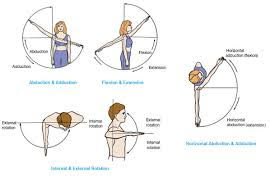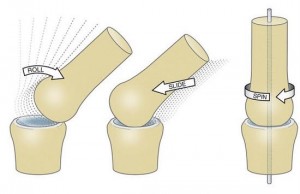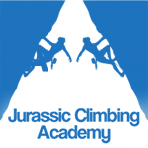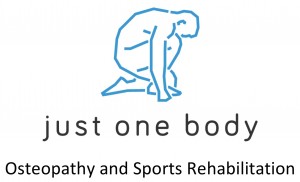Balancing the spinning top – Shoulder management and rehabilitation
The shoulder joint and surrounding tissue provide a unique collection of movement and support unlike any other joint in the body. It’s classified in the same ball and socket category as the hip and Talo-navicular joint in the foot but all these joints have different loading patterns and offer a very different range of function to the body.
The shoulder joint or Glenohumeral joint (GH) is made up from the upper end of the humerus and the glenoid surface of the shoulder blade (scapula). This joint has a relatively small area of contact from bone to bone and therefore relies heavily on the surrounding connective tissue (muscles, ligaments, tendons etc…) to create stability. I will avoid going into detail about the anatomy of the joint, this can be quite heavy on the eyes but we do need to understand the relationship between the bones, cartilage/labrum, ligaments, tendons and muscles etc. This joint moves by allowing two types of movement to occur; for now I’ll refer to these as macro and micro movements.
Text books will talk about the movements of the shoulder joint and the ranges available at the end of each movement, but in reality we rarely work in the full range on a daily basis. When climbing we use a combination of the movements within a range that requires a great level of strength, mobility and stability. It is important to ensure that when accessing these less familiar ranges your body is properly conditioned to deal with the force required to apply good climbing technique.
When thinking about the GH it is important to understand how it interacts with the rest of the body as this joint never works in isolation. The collar bone (clavicle) bridges the scapula and the sternum. With a number of muscles and other connective tissue it is very important to ensure the joints on each end of the clavicle are moving well and the muscles are balanced in terms of flexibility and strength.
Another key ‘joint’ (it’s not technically) is the connection between the scapula and the ribs (Scapulo-thoracic joint). I find this area is pivotal for good GH function as your scapula position is important for enabling the GH, but also ensuring the risk of any impingement is low.
A typical problem I come across in climbers relates to two main movements of the GH. When lifting your arm to the side (abduction) the end of the humerus needs to glide downwards to ensure a range of structures in the top part of the GH don’t get squashed. The body can deal with this pressure in the short term but eventually some type of impingement injury will appear causing pain and can stop your climbing still in it’s tracks.
With this type of problem it is important to understand what elements are colluding to cause this pain. Rather than treating the sore area, a detailed assessment of the GH, scapula-thoracic joint, clavicle and the humerus is essential. Understanding how the joints and muscles are balanced can highlight why the downwards glide is not happening. For example, rotator cuff muscles can get quite inflexible from a prolonged climbing period. This restriction can cause an inappropriate movement pattern leading to an impingement.
Clearly there are more injuries and issues to consider when diagnosing and treating a shoulder problem, sometimes rest will be enough but generally having a professional’s opinion will be more effective than rest and hope.
Prevention is always easier than cure… What to work on can be quite simple to implement but it is important to ensure that training and stretching is being performed properly but also appropriately. Over training and over stretching muscles can cause as many problems as they can fix. It’s a good idea to have someone look over you shoulder function before you undertake any exercise programme.
Happy body = Happy climber
Following on from this we need to consider how we can improve the strength and mobility of the shoulders and more importantly of the whole shoulder girdle and therefore reduce the likelihood of injury. As can be seen from the discussion above the shoulders are very complex structures which are attached and effected by many connections within themselves and to other parts of the upper body structure, the shoulder girdle. We need to strengthen and increase the mobility of these structures and connections to allow the body to get into the correct position to be able to exert as much force as possible, to provide the greatest gains, without injury. Mobility an be defined as the body’s ability to move into positions under the muscles’ own power.
Upper body strength and mobility are particularly important to allow you to deal with the physical situations found in climbing and transfer the forces required. Lack of mobility will also inhibit you from getting into positions required in climbing such as the pulling over roofs, rotation and reaching, compression moves.
Below are a number of exercises that we practice within our personal climb training and when coaching clients. The descriptions shown below are only an overview and you might want to seek further advice before commencing with the exercises. You may contact us at – Info@jurassicclimbing.co.uk or book a coaching session or Skype session at – http://www.jurassicclimbing.co.uk/coaching/.
Shoulder Girdle Strengthening and Mobility
The first exercises that we are going to look at are the scapula push up, scapula dip, scapula pull up, fly prone to cross and reverse butterfly. These exercises all work on strengthening and increasing the mobility of the whole shoulder girdle. Start slowly as all the exercises are much harder than they may look, especially the fly exercise, but persevere and you will soon feel the benefit.
Scapula Push Ups
Invaluable climbing exercise that is a great precursor for the front lever and for any movement on steep routes and roofs. From the standard push up position and whilst keeping arms straight at all times, lower your chest to the floor and bring your scapula together, then raise your spine until it fully rounds and separate your scapula. Repeat 10 times for one set.
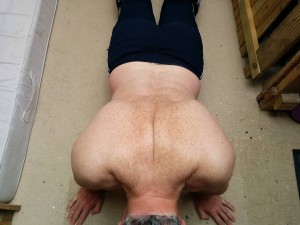
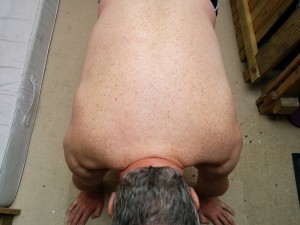
Scapula Dips
Another great climbing precursor for the movement needed to make a mantle move. From the top of the standard triceps dip and with straight arms, allow your body to sink until your ears meet your shoulders, then reverse to push your body up as high as possible. Repeat 10 times for one set.
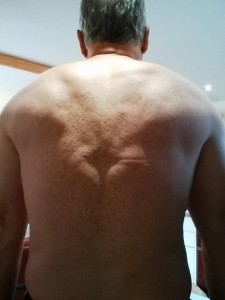
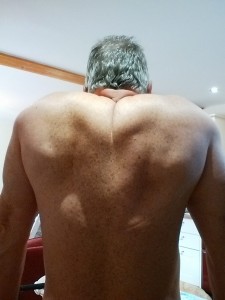
Scapula Pull Ups
The actuation of the scapula at the start of any sort of pull up is paramount for climbers. Hang on totally straight arms from a pull up bar or jugs on a board so that your ears are touching your shoulders. Now pull your scapula down and raise your body whilst staying on straight arms throughout. Repeat 10 times for one set.
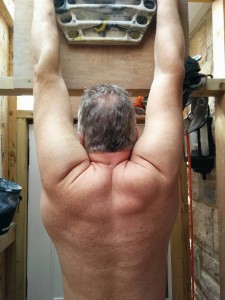
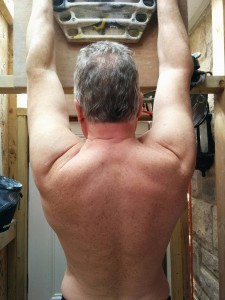
Fly Prone to Cross
These are are very hard, but great to strengthen your shoulder girdle and lengthen your front shoulder attachments. Set two rings at shoulder width apart and 600mm off of the ground. Now kneel down and hold the rings in both hands and extend your body and arms straight forward, return to the starting position and once again go forward, but this time extend your arms out sideways into a cross, then return to starting position. To make these even harder do them on your toes rather than your knees. Repeat 5 times for one set.
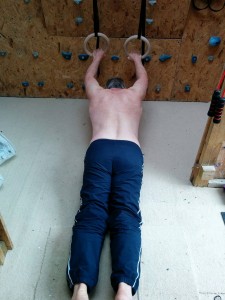
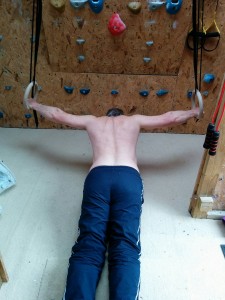
Reverse Butterfly
These are great to strengthen your shoulder girdle and lengthen your rear shoulder attachments. Set two rings at about chest height, then hold them on straight arms and set your feet in-front of you with your body at about 45 degrees. Now whilst keeping your arms straight move your arms apart and lift your body upwards ending in a cross, then return to the bottom. Repeat 10 times for one set.
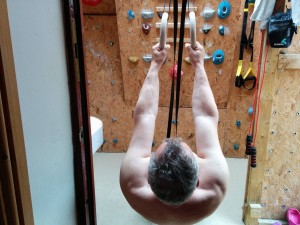
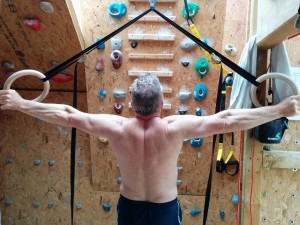
Shoulder Girdle Stretching and Mobility
The next exercises that we are going to look at are the scapula foam rolling, scapula rear and shoulder front attachment hard ball rolling, armpit foam rolling, chest and shoulder stretch and scapula dislocates. These exercises all work on increasing the flexibility and mobility of the whole shoulder girdle. Start slowly as all the exercises can feel difficult and quite painful when you first start, especially when you find a tight muscle during rolling, but persevere and you will soon feel the benefit.
Scapula Foam Rolling
Position your scapula over a foam roller and then hug you arms around you. Then move slowly backwards and forwards over the scapula and concentrate on any tight or hard areas.
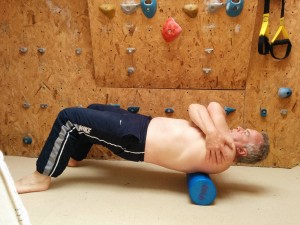
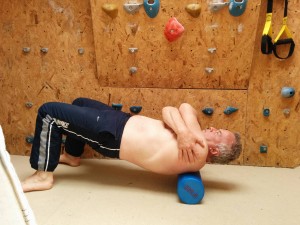
Scapula Rear and Shoulder Front Attachment Hard Ball Rolling
Position a hard ball between your scapula or front shoulder muscles and a flat wall. Then move slowly around concentrating on any tight or hard areas.
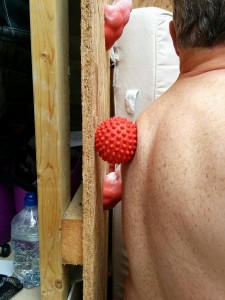
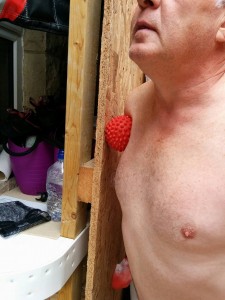
Armpit Foam Rolling
Position your armpit over a foam roller and then move slowly backwards and forwards over the roller and concentrate on any tight or hard areas.
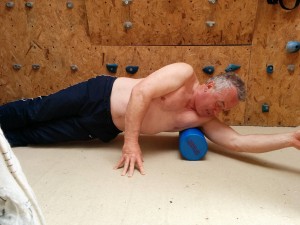
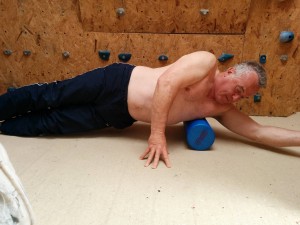
Chest and Shoulder Stretch
Position yourself on the ground on your hands and knees, now raise your hips into the air whilst pulling your shoulders and chest down through the floor and hold for 20 seconds.
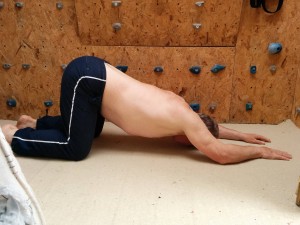
Scapula Dislocates
Here we try hard to dislocate your shoulders….not really! I have no idea why this exercise has the name it does, but it really does help with shoulder girdle flexibility. Hold a broom handle or as below a length of plastic pipe in front of you with hands as far apart as possible, now keeping your arms straight move the pole up and over your head and then down to touch your lower back, then reverse to the front again. Repeat 10 times for one set.
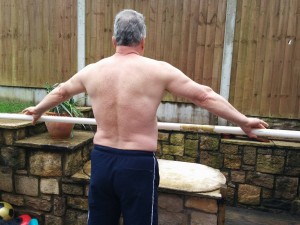
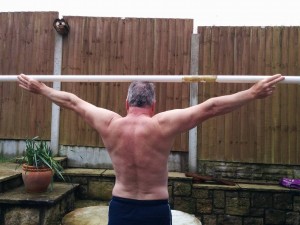
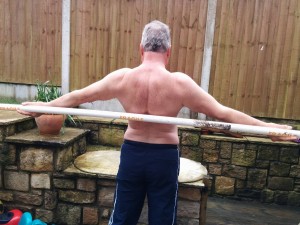
An Article Collaboration

